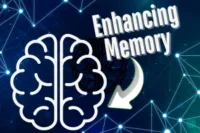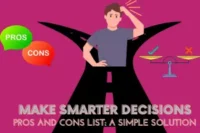The Ultimate Guide to Digital Detox Initiatives in 2025: From Global Movements to Local Policy
Published: 06/08/2025
Did you know that, by 2025, the average person will spend nearly seven hours a day staring at screens? Whether it’s work emails, social media scrolling, or just unwinding with a show, we are constantly plugged in. As a result, digital overload has become a leading cause of burnout, anxiety, and even physical health issues like eye strain and sleep deprivation.
If you’re feeling like you’re constantly connected and drained by your devices, you’re not alone. Many professionals report feeling exhausted from the never-ending barrage of notifications and the pressure to always be “on.” Parents are increasingly concerned about their children’s screen time, worried about the impact on mental health and development. And even those who simply want to find a healthy balance between the digital world and their real-life interactions are struggling. The truth is, digital burnout isn’t just a personal issue—it’s a growing societal challenge.
But it doesn’t have to be this way. This blog post serves as your ultimate guide to understanding digital detox initiatives in 2025. While many articles offer personal tips for cutting down on screen time, this post takes a broader look. We’ll dive into global movements, government policies, and local programs that are shaping the digital detox landscape. Whether you’re looking for personal strategies or hoping to understand the bigger picture of how the world is tackling digital overload, you’ll find practical, actionable insights here.
The Global Mission: Understanding World Digital Detox Day
As screen time continues to rise globally, the need for conscious disconnection has never been more urgent. World Digital Detox Day (WDDD) serves as a pivotal reminder to reassess our relationship with technology and prioritize our mental and emotional well-being.
What is World Digital Detox Day (WDDD)?
World Digital Detox Day (WDDD) is an annual global event dedicated to raising awareness about the negative effects of excessive screen time and promoting the importance of taking a break from our digital devices. Founded in 2020 by Dr. Rekha Chaudhari, this day encourages individuals, communities, and organizations to disconnect from technology and reconnect with real-world experiences—whether it’s spending quality time with family, engaging in outdoor activities, or simply enjoying the present moment. The core mission of WDDD is to remind us all that life beyond screens is not only possible but essential for our mental and emotional well-being.
Dr. Rekha Chaudhari, the founder of WDDD, puts it best:
The digital world is not inherently harmful, but overexposure can lead to burnout, anxiety, and isolation. Digital detox isn’t about abandoning technology—it’s about creating healthy boundaries to restore balance.Dr. Rekha Chaudhari, the founder of WDDD
The WDDD Approach: Policy and Advocacy
World Digital Detox Day goes far beyond individual actions—it’s also about influencing policy on a global scale. One of WDDD’s primary goals is to advocate for healthier digital practices at the governmental level, particularly focusing on child safety and screen time regulation. With the alarming rise in mental health issues among adolescents linked to excessive screen time, WDDD is working to push for stricter age restrictions on social media platforms and better education around digital wellness.
For instance, studies show that 90% of teens in developed countries are spending over 6 hours a day on screens, with the majority of that time being spent on social media. This has led to an increase in issues such as anxiety, depression, and poor sleep quality, which are exacerbated by excessive device use. By pushing for policy changes, WDDD hopes to create a safer digital environment for younger generations and provide families with clearer guidelines on screen time.
Key Takeaway for the Wellness Enthusiast
As a wellness enthusiast, participating in World Digital Detox Day is a simple yet powerful way to contribute to this global movement. Here are a few practical steps you can take:
- Unplug for a day: Try setting aside one day to disconnect from all screens, including your phone, computer, and TV. Use this time to engage in offline activities like reading, hiking, or having a face-to-face conversation with loved ones.
- Advocate for digital wellness: Support organizations and initiatives that promote healthier digital habits, such as WDDD. Share their message on social media or encourage friends and family to get involved.
- Educate yourself: Take the time to learn more about the effects of screen time on mental health. Understanding the science behind digital overload can help you make informed decisions about your own device use and encourage others to do the same.

By embracing WDDD, you not only join a global effort to restore balance in a hyper-connected world, but you also promote a healthier relationship with technology that can have long-term benefits for you and those around you.
Policy in Action: Government-Led Programs
As governments worldwide recognize the impact of digital overload, various regions are taking proactive steps to integrate digital wellness into public health strategies. One such initiative, launched in Karnataka, India, is leading the way in addressing this growing concern.
Case Study: Karnataka’s “Beyond Screens” Initiative
In response to growing concerns about digital overload and its impact on public health, the state of Karnataka in India launched its pioneering “Beyond Screens” Initiative in 2023. This forward-thinking government program is designed to integrate digital detox practices into mainstream healthcare, aiming to create healthier relationships with technology among the general public, especially children and young adults.
The initiative is notable for its collaboration between various sectors: the Karnataka government, the All India Gaming Federation (AIGF), and Kahamind Healthcare, a healthcare provider with expertise in mental health and wellness. Together, they are combining policy, education, and healthcare services to help citizens manage their screen time and mental well-being.
The core goals of the “Beyond Screens” Initiative are:
- Raising awareness about the mental and physical health risks of excessive screen time.
- Offering tools to help individuals, particularly children, reduce screen time.
- Incorporating digital detox into mainstream healthcare practices, such as stress management, therapy, and mindfulness programs.
One of the initiative’s key components is community outreach, where local health centers collaborate with schools and hospitals to offer digital wellness workshops, providing strategies for managing screen time effectively.
As Priyank Kharge, Karnataka’s IT-BT Minister, stated, “The ‘Beyond Screens’ initiative is not just about reducing screen time, but about reshaping how we view and interact with technology in a balanced, healthy way. By integrating digital detox into healthcare, we can better address the mental health challenges posed by excessive screen exposure.”
Case Study: The Alabama FOCUS Act and Community Response
The FOCUS Act, passed in Alabama in 2024, aims to combat the growing issue of digital distractions in schools by restricting the use of mobile phones in classrooms. The law mandates that students only use phones during specific periods, primarily for educational purposes, while discouraging recreational screen time during school hours.
This policy has sparked significant community response, particularly in schools, where educators and parents have been vocal about the need for a more balanced approach to technology in education.
In response to the FOCUS Act, local communities launched the “Back to School Digital Detox Week” initiative, an event designed to educate both students and parents about the importance of limiting screen time. Schools across Alabama organized various offline activities—such as outdoor sports, art workshops, and group discussions—to encourage social interaction and physical activity without digital distractions.
shared by a concerned parent, Sarah Miller, who participated in this initiative, illustrates the real-world impact: “After just one week of the Digital Detox Week, my son came home with more energy and excitement for school. He seemed more focused, and his mood was noticeably better. It made me realize how much we take for granted when it comes to reducing screen time.”
Key Takeaway for Policymakers and Academics
These case studies provide clear blueprints for other regions and countries considering similar policies to combat digital overload and its associated risks. Both the Karnataka “Beyond Screens” Initiative and Alabama’s FOCUS Act showcase how collaborative, multi-stakeholder approaches can create effective, sustainable solutions to screen addiction and mental health challenges.
For policymakers and academics, the key takeaway is the importance of policy-backed, community-driven initiatives that include educational outreach, healthcare integration, and practical tools for individuals. These examples highlight the need for government intervention combined with grassroots efforts to effectively address digital wellness on a broader scale. These programs serve as models for how both local and global communities can work together to create healthier, more balanced relationships with technology.
From the Boardroom to Your Bedroom: Corporate & Personal Solutions
As digital overload continues to affect both professionals and individuals, solutions are emerging from multiple fronts—corporate innovations and personal choices alike. One such innovation gaining momentum is the rise of dumbphones, which offer a practical way to disconnect from digital distractions while staying connected.
Industry-Driven Innovation: The “Dumbphone” Trend
As digital detox becomes a growing priority, a notable shift is happening in the consumer technology market: the rise of “dumbphones.” These simplified devices are designed to help people disconnect from the constant distractions of smartphones while still offering basic functionality like calls and texts.
Brands like HMD Global have capitalized on this trend, pushing back against the overwhelming complexity of modern smartphones. HMD’s campaign, “Shut the Phone Up Sunday,” encourages users to put down their smartphones for an entire day each week and embrace the simplicity of a dumbphone. The initiative aims to foster more mindful device usage and promote real-world connection.
This trend is a clear response to the digital fatigue many consumers experience, as people are seeking ways to cut down on constant notifications, social media pressure, and the lure of endless scrolling. By using devices that focus on the basics, people are finding it easier to reclaim their time and mental energy.
Digital Wellness in the Workplace
Corporate environments are also recognizing the need to address employee burnout from digital overload. With the rise of remote work and the expectation of always being connected, many employees are facing unprecedented levels of stress and fatigue. Companies are taking action to foster a healthier work-life balance and support digital wellness in their workplaces.
Some of the most effective solutions being implemented include:
- Designated “No-Email” Hours: Companies like Volkswagen have introduced no-email hours, where employees are encouraged not to check or respond to emails outside of work hours. This allows individuals to mentally disengage and focus on personal time.
- Digital Detox Initiatives: Leading firms are organizing periodic “digital detox days” where employees are encouraged to stay off digital devices for a day or participate in activities like yoga or meditation.
- Wellness Programs: Many organizations are incorporating digital wellness as part of their broader wellness programs. These might include mindfulness workshops, physical activities like walking groups, or even access to counseling services for managing tech-induced stress.

By providing resources and guidelines for digital balance, companies are not only improving employee well-being but also enhancing overall productivity and job satisfaction.
Key Takeaway for the Overwhelmed Professional
If you’re an overwhelmed professional looking to reduce digital burnout, there are several simple, actionable steps you can start implementing right now:
- Mute Notifications: Take control of your notifications by silencing non-essential apps. Consider only receiving notifications from work-related apps during business hours.
- Designate Phone-Free Zones: Set boundaries by establishing phone-free zones in your home or office. Whether it’s during meals or work hours, these zones help you take intentional breaks from screens.
- Remove Unused Apps: Go through your phone and remove apps that you no longer use. This will help reduce distractions and create more space in your digital life.
- Set Screen Time Limits: Use built-in features on your devices to set daily screen time limits. This will remind you when you’ve reached your limit and encourage healthier usage.
- Schedule Digital Detox Time: Block out time in your calendar for a digital detox. Whether it’s an hour a day or a full weekend, this time allows you to unwind and disconnect without the pressure of checking your devices.
By making small, intentional changes to your digital habits, you can significantly reduce burnout and feel more in control of your time.
Expert-Level Insights: Common Mistakes and Your Next Steps
As you embark on your digital detox journey, it’s easy to make a few missteps along the way. Understanding the common pitfalls can help you avoid frustration and stay on track to achieving a healthier relationship with technology.
Common Mistakes to Avoid
Starting a digital detox can be an overwhelming task, and many people make the same mistakes along the way. Here are some common pitfalls to watch out for:
- Trying to Quit Cold Turkey: While it might seem tempting to go all-in and completely abandon your devices, going “cold turkey” can often lead to frustration, anxiety, and eventual relapse. A gradual approach is more sustainable.
- Not Setting Clear Boundaries: If you don’t set specific limits—such as “no screens after 8 PM” or “no devices at the dinner table”—you risk slipping back into old habits without realizing it. Clear, defined boundaries are essential for success.
- Focusing Only on One Device: A common mistake is only focusing on one device, such as your phone, and ignoring others, like your computer or tablet. If you’re not addressing all your devices, the problem will persist.
- Neglecting Social Connections: Some people mistakenly think that digital detoxing means cutting off all online communication, but it’s important to maintain social connections in healthy ways. Balance is key—don’t isolate yourself entirely.
- Setting Unrealistic Expectations: Expecting drastic improvements in mental health or productivity immediately can lead to disappointment. Digital detox is a journey, and progress takes time.
Advanced Maintenance: Making It Stick
Maintaining a healthy digital balance isn’t a one-time effort—it’s a long-term commitment. To make your digital detox efforts stick, consider these advanced strategies:
- Schedule Regular Detox Days: Treat your digital detox like an ongoing practice. Schedule one day each month where you unplug completely—no screens for work, social media, or entertainment. These “digital sabbaticals” give you regular opportunities to reset.
- Use Technology to Manage Technology: Leverage apps or built-in smartphone features to help you stay on track. Use screen time monitoring tools to limit your device usage or set up app blockers during work or relaxation hours.
- Practice Mindful Technology Use: Instead of impulsively checking your phone, practice mindfulness by engaging in intentional screen time. Before using your device, pause for a moment to ask yourself if it aligns with your goals for that time.
- Review and Adjust Regularly: Just like with any other wellness routine, it’s important to assess your progress. Regularly review your digital habits and adjust your detox strategy as needed. Are certain devices or apps becoming more intrusive? Set new boundaries accordingly.
- Cultivate Offline Hobbies: The more fulfilling offline activities you engage in—whether it’s reading, exercising, cooking, or socializing in person—the easier it will be to maintain a digital detox. Fill your time with things that don’t involve a screen.
By embedding digital wellness into your everyday life, you’ll avoid burnout and create a healthier relationship with technology that lasts long-term.
Now that you have a comprehensive understanding of digital detox and practical strategies to implement, it’s time to take action. Choose one step from the list above—whether it’s muting notifications, scheduling a digital detox day, or removing an app—and commit to it today. Taking small, intentional actions will lead to meaningful changes in your digital well-being. Remember, the journey to a balanced life starts with a single step. What will yours be?
Conclusion
In this post, we’ve explored a variety of initiatives and trends that are helping individuals, communities, and organizations tackle the growing problem of digital overload. From World Digital Detox Day and government-led programs like Karnataka’s “Beyond Screens” Initiative and the Alabama FOCUS Act, to industry innovations such as the dumbphone trend and workplace wellness programs, it’s clear that digital wellness is not just an individual effort—it’s a global movement. Whether it’s policy changes, corporate initiatives, or personal strategies, everyone has a role to play in creating a balanced digital environment.
As technology continues to advance, we’re likely to see even greater challenges and opportunities for digital wellness. The future of technology and human well-being will depend on our ability to set healthy boundaries, integrate digital mindfulness into daily life, and advocate for policies that protect our mental and emotional health. By addressing these issues now, we can shape a future where technology enhances our lives without overwhelming us.
Now, it’s your turn! Have you experienced digital overload, or perhaps found your own ways to unplug? Share your thoughts and experiences in the comments below. Let’s start a conversation about how we can all take steps toward a healthier relationship with technology. If you found this post valuable, don’t forget to share it with your friends and colleagues who might benefit from this digital detox movement.
Common Questions: The Digital Detox Debrief
A digital detox refers to taking a break from digital devices such as phones, computers, and social media to recharge mentally and physically. It helps to reduce screen time, prevent burnout, and improve overall well-being by reconnecting with offline activities.
Start by setting clear boundaries for your screen time. Try unplugging for specific hours of the day, such as during meals or before bed. Begin with short, manageable periods and gradually extend them as you adjust. It’s important to make the process feel intentional, not forced.
World Digital Detox Day helps raise awareness of the negative impacts of excessive screen time. By participating, you’re not only practicing self-care but also contributing to a global movement that promotes healthier relationships with technology, mental well-being, and a balanced lifestyle.
Yes, reducing screen time can lead to decreased feelings of stress, anxiety, and depression. It can also improve sleep quality, foster more meaningful social interactions, and enhance overall mental clarity and focus.
Government initiatives, like Karnataka’s “Beyond Screens” program or Alabama’s FOCUS Act, provide structured ways to reduce screen time through policy, advocacy, and community engagement. These programs push for regulations around children’s screen time and support public health by encouraging healthier technology usage.
Taking regular breaks from digital devices can actually boost productivity. Disconnecting allows you to recharge, focus better, and return to tasks with improved efficiency. Reduced digital distractions can also improve your ability to concentrate and make decisions.
Dumbphones are basic mobile devices designed to reduce digital distractions. They offer limited functions, such as calling and texting, but don’t have apps, social media, or internet browsing. Using a dumbphone for certain periods can help you reduce screen time and refocus on real-life activities.
Yes, reducing screen time, especially before bed, can significantly improve sleep quality. The blue light emitted by screens interferes with your body’s production of melatonin, the hormone that regulates sleep. Limiting screen use in the evening helps your body unwind and sleep better.
Companies can promote digital wellness by instituting “no-email” hours, encouraging screen-free meetings, and offering wellness programs that focus on mental health. These initiatives help reduce burnout, improve work-life balance, and enhance employee productivity.

- Be Respectful
- Stay Relevant
- Stay Positive
- True Feedback
- Encourage Discussion
- Avoid Spamming
- No Fake News
- Don't Copy-Paste
- No Personal Attacks



- Be Respectful
- Stay Relevant
- Stay Positive
- True Feedback
- Encourage Discussion
- Avoid Spamming
- No Fake News
- Don't Copy-Paste
- No Personal Attacks





